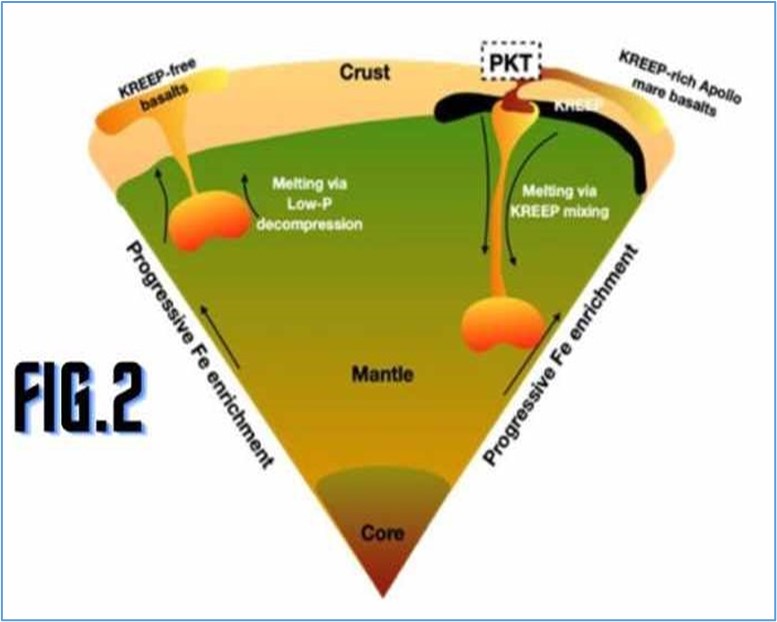PREVIOUS
Origin of basalts on Moon
February 24 , 2023
1042 days
1076
0
- Moon’s dark regions that are visible to the naked eye, known as the ‘mare’.
- They are remnants of a violent history of the Solar System.
- There are no records, though, of these frenzied events on Earth.
- The large mare regions on the near side of the Moon, that can be seen from Earth, mainly consists of basalts comprising volcanic rocks.
- These regions hold the key to how the Moon cooled and evolved.
- They also providing information on what were the sources of heat that melted and crystallised the material to the present-day rocks.
- The Apollo, Luna, and Chang’E-5 missions have brought to Earth an extensive collection of mare basalts.
- Apollo mare basalts date back to the age of 3.8–3.3 Ga (Ga is one billion years).
- ISRO stated the calculations show that these basalts must be a result of low-pressure melting in the Moon.
- Further, they also reveal that these basalts originated from a cool, shallow, and compositionally distinct part of the lunar interior.
- The Moon's interior melted in the form of basalt magmatism from as early as 4.3 - 3.9 Ga globally.
- The potassium, rare earth elements, and phosphorous rich zone of moon known as Procellarum KREEP Terrane (PKT). This PKT region formed as later as 3.8-3.0 Ga.

Leave a Reply
Your Comment is awaiting moderation.


